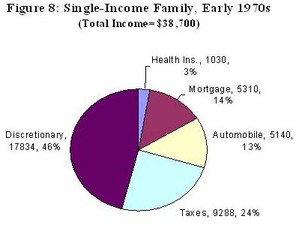Welcome to the Emergency Room. Can I See Your Insurance Card and Polling Numbers, Please?
Democratic blogger Ezra Klein appears to be positioning Dem health care reforms as a way to cut costs, on the grounds that a reformed system will be able to make "hard choices" and "rational" coverage decisions, by which Klein seems to mean "not providing" treatments that are unproven or too expensive--when "a person's life, or health, is not worth the price." Matthew Yglesias' recent post seems to be saying the same thing, though clarity isn't its strong suit. (He must have left it on Journolist.)
...
The "rational," cost-cutting, "hard-choices" pitch isn't just awful marketing--I don't even think it's accurate. Put it this way: I'm for universal health care in large part precisely because I think the government will be less tough-minded and cost-conscious when it comes to the inevitable rationing of care than for-profit insurance companies will be. Take Arnold Kling's example of a young patient with cancer, where "the best hope is a treatment that costs $100,000 and offers a chance of success of 1 in 200." No "rational bureaucracy" would spend $20 million to save a life, Kling argues. I doubt any private insurance company is going to write a policy that spends $20 million to save a life. But I think the government--faced with demands from patient groups and disease lobbies and treatment providers and Oprah and run, ultimately, by politicians as terrified of being held responsible for denying treatment as they are quick to pander to the public's sentimental bias toward life--is less likely to be "rational" than the private sector.
That is to say, the government's more likely to pay for the treatment (assuming a doctor recommends it). So it's government for me.
He comes oh-so-close to getting it right, but then falls short.
Klein is right that the pressure will be to ration care -- we already see such rationing being seriously considered in Massachusetts (the model of choice for Democrats) under the weight of massive expenditures.
But Kaus is correct that if some high-powered and well-funded interest group gets behind a certain procedure, cost-effective or not, the government overlords of the program will likely approve it. As a result, for example, no potential treatment for breast cancer will ever be denied given the proven strength of women's groups lobbying for breast cancer treatment (already, breast cancer research is hugely over-funded vs. other diseases given its mortality, due in large part to this powerful lobbying).
But it is not one dynamic or the other. Both will exist. There will be huge pressures to cut back somewhere, as costs skyrocket. And there will be huge pressure from certain interest groups to fund treatment for certain diseases in unlimited amounts. The result will not be, as Kaus posits, that everything will be funded more than it is today -- the result will be that certain procedures and conditions with strong lobbying and political muscle will get funded more, with the difference being made up from cutting funding for conditions and procedures without a well-organized lobby.
Access to care will no longer be determined by money, but by political pull. (Yeah, I know, it's Ayn Rand's world and we all just live in it).
 The Obama-Biden plan provides affordable, accessible health care for all Americans, builds on the existing health care system, and uses existing providers, doctors and plans to implement the plan. Under the Obama-Biden plan, patients will be able to make health care decisions with their doctors, instead of being blocked by insurance company bureaucrats.
The Obama-Biden plan provides affordable, accessible health care for all Americans, builds on the existing health care system, and uses existing providers, doctors and plans to implement the plan. Under the Obama-Biden plan, patients will be able to make health care decisions with their doctors, instead of being blocked by insurance company bureaucrats.

